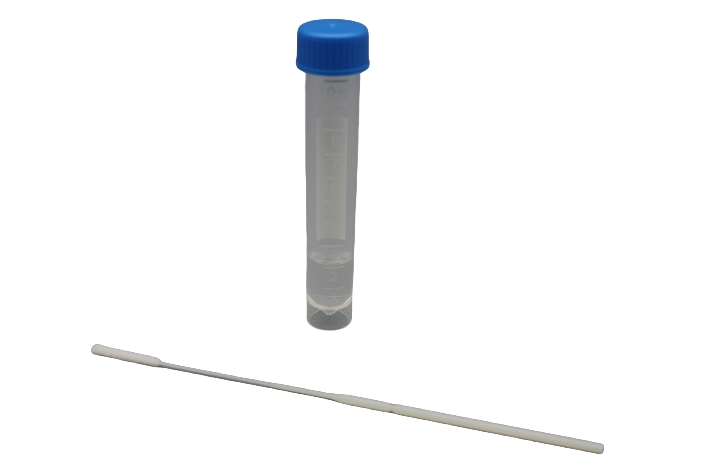Comparing Methods: Anterior Nasal Swab Sampling vs Nasopharyngeal Swab Sampling
5777Common Covid-19 test uses oropharyngeal sampling method, but in specific cases, the nasal sampling method is also used.
View detailsSearch the whole station Pandemic Supply
What are flocked specimen swabs
“Flocked Specimen Swabs” are flocked swabs, which are a new type of sampling tool widely used in medical and biological testing fields. The following is a detailed introduction to it:
Structure and Material
Swab head: usually composed of fine nylon fiber fluff, which is vertically fixed on the swab head through a special flocking process, which can greatly increase the contact area with the sampling site and collect samples more effectively2.
Swab rod: generally made of plastic material, such as ABS plastic, etc., with certain toughness and strength, convenient for hand-held operation, and some swab rods are also equipped with unique breaking points, which are convenient for breaking after collecting samples to facilitate the storage and transportation of specimens13.

Features and Advantages
High sampling efficiency: The fibers are tightly arranged and soft, which can better contact and absorb samples, and go deep into various difficult-to-reach parts for sampling, which can improve the quantity and quality of sample collection. Compared with traditional sampling tools such as cotton swabs, it can collect target samples more effectively2.
Strong adsorption: The fibers have good adsorption properties and can quickly adsorb cells, viruses and other substances in the samples to ensure the integrity of the samples.
Easy to wash off: The collected samples can be easily washed off from the flocked swab because it does not contain internal fabric or other inner cores to absorb the specimens. The samples are mainly adsorbed on the surface of the villi, which is conducive to subsequent detection and analysis4.
Soft and comfortable: It has little stimulation to the sampled parts, especially when sampling sensitive parts such as the nasopharynx, it can reduce discomfort and make it more comfortable to use.
Not easy to fall off: The specially treated flocked swabs have firm villi that are not easy to fall off, which avoids the villi falling into the sample during the sampling process and affecting the test results2.
Application field
Medical testing: It is commonly used to collect various samples from the human body, such as oral swabs, nasopharyngeal swabs, sputum, etc., for the detection of pathogens such as viruses and bacteria. For example, during the COVID-19 pandemic, it was widely used to collect throat swabs and nasal swabs for the detection of new coronavirus.
Biological research: In biological research, it can be used to collect samples such as cells and tissues for genetic analysis, cell culture, cytology and other experiments.
Environmental monitoring: It can be used to collect microbial samples in the environment, such as air, water, soil, etc., to conduct environmental quality testing and evaluate indicators such as pollutants and microorganisms in the environment.
Forensic identification: It can be used to collect biological samples at the crime scene, such as blood, hair, dandruff, etc., as evidence for forensic identification.
How to use
Choose the right swab: According to the sampling requirements and the characteristics of the sampled part, select the corresponding type and specification of flocking swab.
Preparation: Open the package, take out the flocking swab, and prepare the sampling tube, label and other tools.
Sampling: Gently insert the flocking swab into the sampled part, such as the mouth, nasal cavity, etc., rotate or wipe a certain number of times in the prescribed manner, so that the swab fully contacts the sampling part to collect enough samples.
Save the sample: Put the flocking swab with the sample collected into the sampling tube, break the swab rod, leave the swab head in the sampling tube, seal the sampling tube, and mark the sample information.
Send for inspection: Send the sample to the testing agency for testing in a timely manner.
Common Covid-19 test uses oropharyngeal sampling method, but in specific cases, the nasal sampling method is also used.
View detailsDisposable sterile swabs have become an indispensable tool in various fields, particularly in the medical industry.
View detailsHuachenyang single-use sampling swab has recently been registered by the Medicines and Healthcare products Regulatory Agency(MHRA) in the UK.
View detailsOn May 10, Huachenyang (Shenzhen) Tech Co., Ltd. independently developed and produced disposable sterile sampling swabs that received CE 2862 certi...
View detailsWe value your privacy We use cookies to enhance your browsing experience, serve personalized ads or content, and analyze our traffic. By clicking "Accept All", you consent to our use of cookies.
Our Privacy Policy